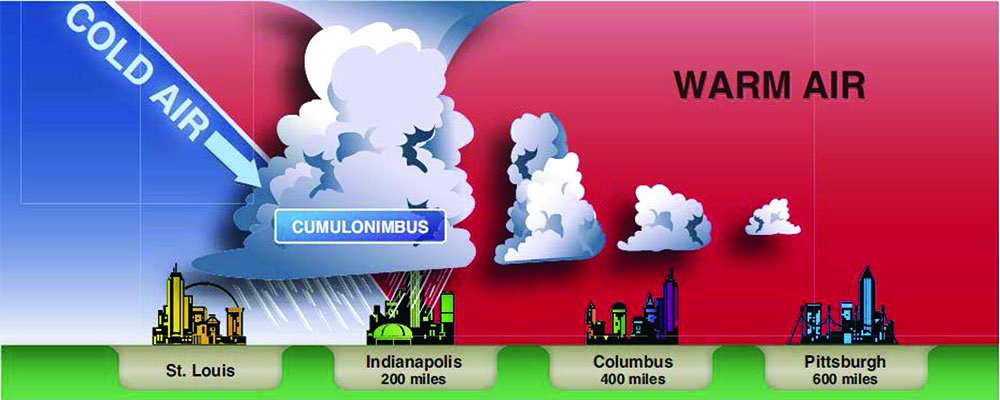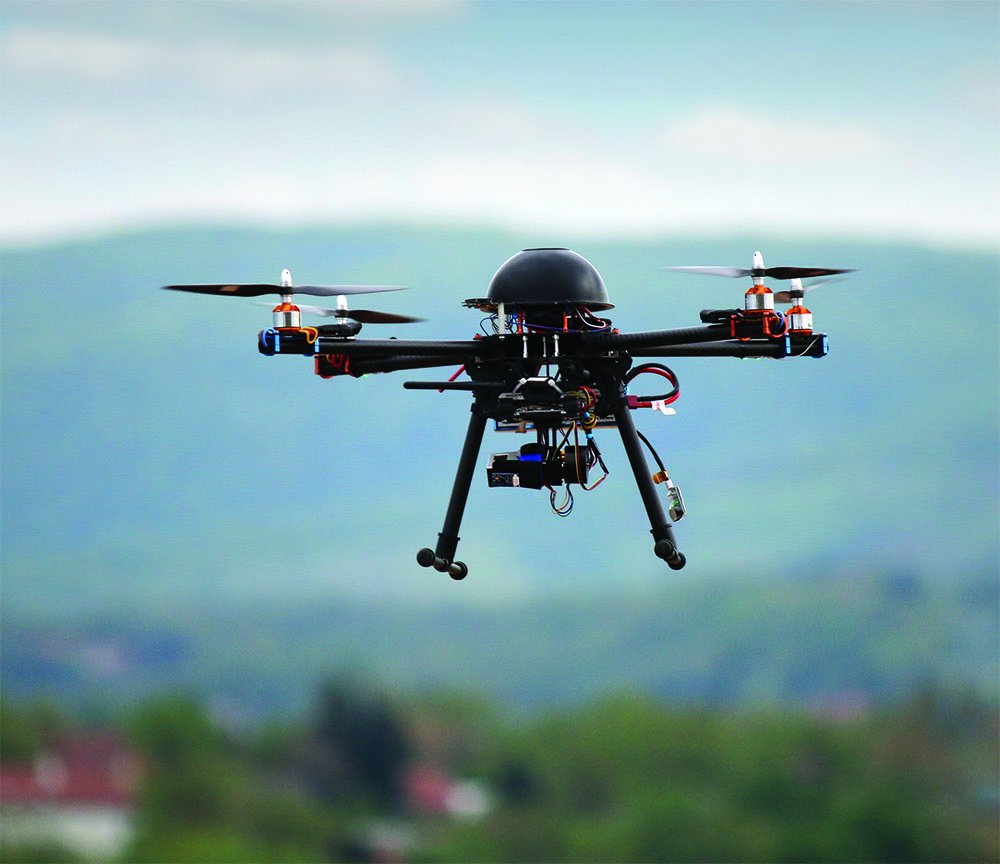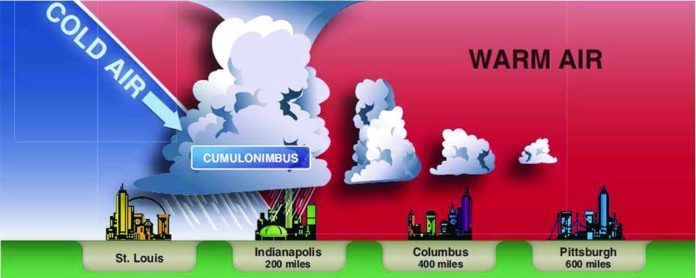Just in time for winter in the U.S., the FAA in October published a revised version of its Advisory Circular on in-flight icing. The new AC 91-74B, Pilot Guide: Flight in Icing Conditions, updates the previous version, which was last issued in 2007, and consolidates a related guidance document, AC 91-51A, Effect Of Icing On Aircraft Control And Airplane Deice And Anti-Ice Systems, which last was updated in 1996. Its purpose is to “provide pilots with a convenient reference guide on the principal factors related to flight in icing conditions and the location of additional information in related publications.”
The new icing AC offers substantial detail for pilots on how to plan for, avoid and deal with in-flight icing in its 63 pages, including pre-flight information and consequences of operating an ice-laden aircraft. Additionally, the AC discusses how aircraft icing certification has changed over the years, including for the FAR Part 23 airplanes many of us fly.
The new AC also provides substantial detail on different kinds of winter precipitation and how they may affect aircraft operations. It highlights the difficulty of basing go/no-go and in-flight decisions on a lack of pilot reports for the area in which one is flying: No aircraft may have flown in the area recently or, if they have, their crews encountered icing but did not report it. The AC reminds us that a “report of no icing in a particular Pirep can be just as useful as those reporting ice.”
One thing the new AC does not do is define “known icing.” After industry objections to a 2006 legal interpretation from one of its regional offices, the FAA eventually declined to define the term. In 2009, the agency stated, “The FAA does not necessarily consider the mere presence of clouds (which may only contain ice crystals) or other forms of visible moisture at temperatures at or below freezing to be conducive to the formation of known ice or to constitute known icing conditions.” The legal interpretation continued by stating, “‘Known icing conditions’ involve…circumstances where a reasonable pilot would expect a substantial likelihood of ice formation on the aircraft based upon all information available to that pilot.” Nothing in the new AC changes the 2009 interpretation.

Despite the comprehensive collection of in-flight icing information and resources the new AC appears to present, one glaring oversight mars it: a paragraph describing the En Route Flight Advisory System, EFAS—Flight Watch—as an in-flight resource for pilots. As we reported in our October issue, the FAA is phasing out Flight Watch and its dedicated frequency, 122.0 MHz, a process that began in September and will continue into March 2016.
Registering Drones
The U.S. Department of Transportation announced in October that the FAA would fast-track new registration rules for drones—unmanned aerial systems, or UAS—and have them ready for Christmas. The FAA created the Unmanned Aircraft Systems (UAS) Registration Task Force to meet their boss’s instructions and has targeted November 20—about the time this issue will be in your mailbox—for its final recommendations.
The FAA’s boss, Administrator Michael P. Huerta, named Earl Lawrence, director of his agency’s UAS Integration Office, and Dave Vos of Google X as the group’s co-chairs. The Task Force planned to meet formally in early November, to begin developing “a streamlined registration process and minimum requirements on which unmanned aircraft should be registered.” The department promises to “expeditiously” consider the Task Force’s recommendations.
Members of the Task Force include the usual suspects, like ALPA, AOPA, GAMA, NBAA and other alphabet soup, plus two representatives from Amazon and one each from Best Buy and Walmart. And don’t forget Google’s representative is a co-chair. Drone manufacturers also will participate formally, with agencies like the Departments of Defense and Homeland Security, plus NASA, in advisory roles.
“Every day, the FAA receives reports of potentially unsafe UAS operations,” the DOT said in a statement, including incidents at major sporting events and flights near manned aircraft. “These reports signal a troubling trend,” Huerta said. “Registration will help make sure that operators know the rules and remain accountable to the public for flying their unmanned aircraft responsibly. When they don’t fly safely, they’ll know there will be consequences.”

The number of active drones in the U.S. at any one moment is unknown, and estimating future sales is part of the problem, as the “by Christmas” deadline underscores. But how the FAA might go about distinguishing between long-exempted model aircraft, consumer-grade drones better suited to indoor use and the types causing the problem isn’t public knowledge yet. Overestimating the general public’s concern over drones risks a backlash, which the Federal Communications Commission encountered in the 1970s when it required CB radio licensing, which was routinely ignored.
The practicality of drone registration also rears its ugly head: it’s unlikely anyone will be required to paint N-numbers on something they got for Christmas before they can fly it. But the make, model and serial number of a drone, and to whom it was sold, likely will be useful to the FAA’s enforcement people down the road.
Low-Cost, DIY ADS-B In
One of the avionics industry’s smaller success stories in recent years has been the portable ADS-B In receiver. Thousands of pilots have bought the devices to display traffic and weather information on iPads and other tablet computers in the cockpit. The receivers listen on 978 MHz for FAA ground stations throughout the U.S. to transmit ADS-B In’s flight information system-broadcast (FIS-B) data, and use 978 MHz alone or with 1090 MHz for traffic information system-broadcast (TIS-B) information.
Anyone with appropriate equipment can obtain the data free of charge and display it, and many options exist. One of the most popular is Appareo Systems’ Stratus 2S, which retails for $899. Now, an off-the-shelf, open-source solution, Stratux, can receive the same data for around $110, though it may not be ideal for everyone. The hardware/software combination works with ForeFlight on an iPad and reportedly with other electronic flight bag apps, including on the Android operating system. The sidebar above has additional details.
About That TIS-B Traffic…
In other ADS-B news, the FAA soon will prevent aircraft equipped with misconfigured or noncertified ADS-B Out avionics from receiving traffic data via traffic information system-broadcast, TIS-B. Many such systems are out there and comply with the ADS-B Out rule, which demands only equipment meeting the TSO’s “performance requirements” and not necessarily a TSO.
Coding in the ADS-B position data broadcast by a so-called non-performing emitter (NPE) tells the system the signal is not fully ADS-B Out compliant. Based on that coding, the FAA doesn’t re-broadcast an NPE’s position data, which it says is unusable and a waste of bandwidth. As many as 40 percent of airborne ADS-B Out systems are incorrectly installed or incorrectly configured, according to the FAA.
Last March, the agency said it will be cracking down on aircraft with improperly installed/configured ADS-B Out equipment as a way of encouraging operators to seek repairs or better equipment. Beginning on or after January 4, 2016, an ADS-B-equipped aircraft not broadcasting the appropriate codes will be considered an NPE and no longer will receive TIS-B traffic data.
We’re not aware of any changes to that timetable. We’re also not aware of how the policy may impact experimental aircraft who aren’t required to carry TSO’d ADS-B Out equipment, even after the 2020 equipage deadline. Note that the FAA’s actions don’t affect portable TIS-B receivers, although they, too, won’t receive traffic data from a nearby NPE.




